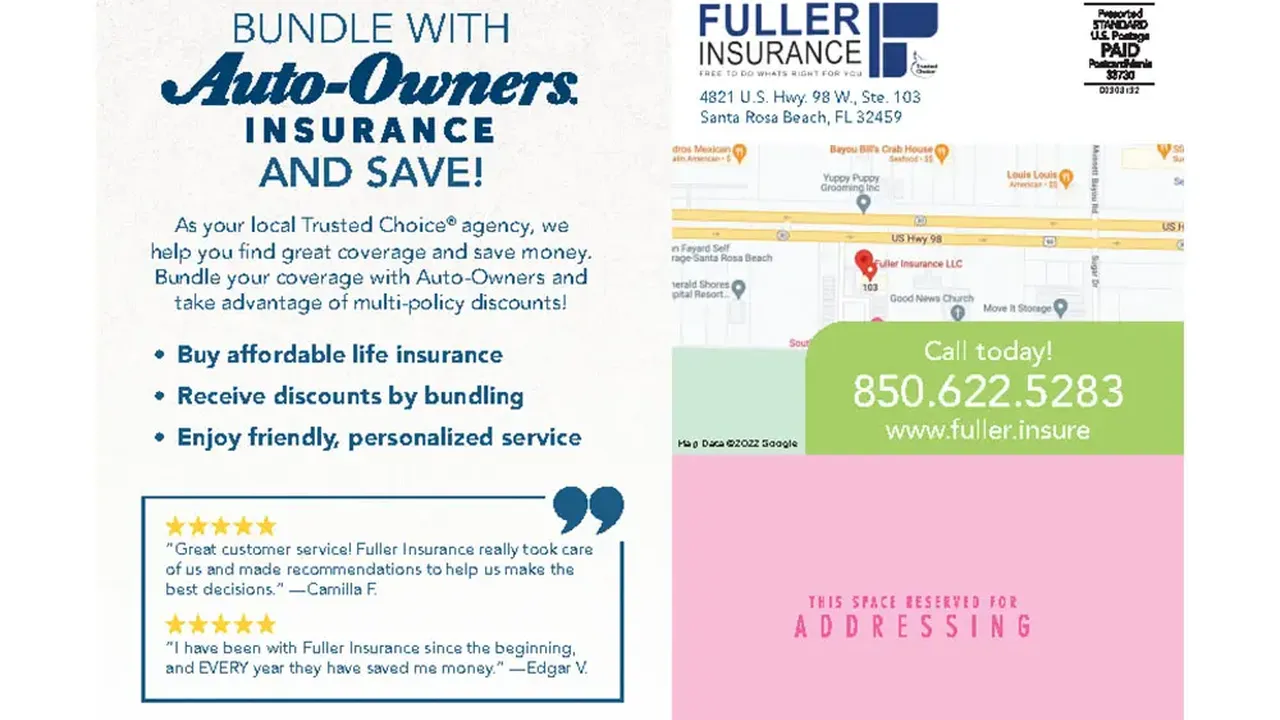How to Calculate Your Life Insurance Needs A Step by Step Guide
A practical guide to determining the optimal amount of life insurance coverage you need to protect your family.

How to Calculate Your Life Insurance Needs A Step by Step Guide
Figuring out how much life insurance you actually need can feel like a daunting task, right? It's not just about picking a random number; it's about ensuring your loved ones are financially secure if you're no longer around to provide for them. This isn't a one-size-fits-all situation. Your ideal coverage amount depends on a bunch of factors unique to your life, like your income, your debts, your family's future needs, and even your current savings. Let's break it down step by step, making it easy to understand and apply to your own situation. We'll cover everything from basic calculations to considering specific products and scenarios, keeping both US and Southeast Asian markets in mind.
Understanding Your Current Financial Landscape Life Insurance Basics
Before we dive into calculations, let's get a clear picture of your current financial situation. Think of it like drawing a map before a big trip. What are your assets? What are your liabilities? Who depends on your income? These are crucial questions.
Income Replacement and Dependents Your Primary Life Insurance Goal
For most people, the main reason to get life insurance is to replace their income. If you're the primary breadwinner, your income covers daily expenses, mortgage payments, education costs, and more. Without it, your family's lifestyle could drastically change. Consider how many years your family would need this income replacement. Is it until your youngest child graduates college? Until your spouse retires? This timeframe is a key component in your calculation.
Debts and Liabilities Protecting Your Family from Financial Burden
Think about all your outstanding debts: mortgage, car loans, credit card balances, personal loans, student loans. If you were to pass away, these debts could become a significant burden for your family. Life insurance can be used to pay off these debts, giving your loved ones a clean slate and one less thing to worry about during an already difficult time. Don't forget about potential final expenses, like funeral costs, which can easily run into thousands of dollars.
Future Expenses and Long Term Goals Education and Retirement Planning with Life Insurance
Beyond immediate needs, what about future goals? College education for your children is a big one. Even if you have savings, life insurance can ensure those funds are available. What about your spouse's retirement? If your income contributes to their retirement savings, life insurance can help bridge that gap. Consider any other significant future expenses you're planning for, like a wedding or a down payment on a home for your children.
Popular Calculation Methods for Life Insurance Needs DIME and Human Life Value
There are several methods to help you estimate your life insurance needs. Let's look at two popular ones: DIME and the Human Life Value approach.
The DIME Method Debts Income Mortgage Education
The DIME method is a straightforward way to calculate your needs. It stands for:
- D - Debts: Add up all your outstanding debts, including your mortgage, car loans, credit card debt, and any personal loans.
- I - Income: Multiply your annual income by the number of years your family would need financial support. A common recommendation is 5-10 years, but this can vary based on your family's specific situation.
- M - Mortgage: Include the full outstanding balance of your mortgage.
- E - Education: Estimate the future cost of your children's college education. Don't forget to factor in inflation!
Once you have these totals, add them up. Then, subtract any existing life insurance policies you already have and any significant savings your family could access. The remaining number is a good starting point for your life insurance coverage.
Human Life Value Approach Valuing Your Economic Contribution
The Human Life Value (HLV) approach is a more complex calculation that attempts to quantify your economic contribution to your family over your remaining working years. It involves estimating your annual income, subtracting taxes and personal expenses, and then multiplying that net income by the number of years until your planned retirement. This figure is then discounted to its present value. While more comprehensive, it can be a bit more abstract for many people. For simplicity, the DIME method is often preferred for initial estimates.
Step by Step Calculation Example for Life Insurance Coverage
Let's walk through an example to make this concrete. Meet the Tan family in Singapore:
- You (the insured): Age 35, annual income S$80,000.
- Spouse: Age 35, annual income S$40,000.
- Children: Two, ages 5 and 2.
- Mortgage: S$500,000 outstanding.
- Other Debts (car loan, credit cards): S$30,000.
- Savings: S$50,000 accessible for immediate needs.
- Existing Life Insurance: S$100,000 (through work).
Applying the DIME Method to the Tan Family
- Debts: S$500,000 (mortgage) + S$30,000 (other debts) = S$530,000
- Income: Let's assume the family needs your income for 15 years (until the youngest child is 17). S$80,000/year * 15 years = S$1,200,000
- Mortgage: Already included in debts.
- Education: Let's estimate S$100,000 per child for university in Singapore, so S$200,000 total.
Total Needs: S$530,000 (Debts) + S$1,200,000 (Income) + S$200,000 (Education) = S$1,930,000
Subtract Existing Resources: S$1,930,000 - S$50,000 (Savings) - S$100,000 (Existing Life Insurance) = S$1,780,000
Based on this, the Tan family would need approximately S$1,780,000 in additional life insurance coverage. This is a substantial amount, but it ensures their financial stability for years to come.
Considering Specific Life Insurance Products and Scenarios Term vs Whole Life Insurance
Once you have an idea of the coverage amount, the next step is to choose the right type of policy. The two main types are term life insurance and whole life insurance, each with its own benefits and use cases.
Term Life Insurance Affordable Coverage for Specific Periods
Term life insurance provides coverage for a specific period, or 'term' – typically 10, 20, or 30 years. If you pass away during the term, your beneficiaries receive a death benefit. If you outlive the term, the policy expires, and there's no payout. It's generally more affordable than whole life insurance, making it a great option for covering needs that have a defined end date, like a mortgage or raising children.
Recommended Term Life Insurance Products US Market
- Haven Life (MassMutual): Known for its easy online application process and competitive rates, especially for healthy individuals. Offers terms up to 30 years. Great for young families needing substantial coverage without breaking the bank.
- Policygenius (Broker): Not an insurer itself, but an excellent platform to compare quotes from multiple top-rated carriers like Lincoln Financial, Pacific Life, and Transamerica. Ideal for finding the most competitive rates tailored to your specific health profile and needs.
- Ladder Life: Offers flexible term life insurance where you can adjust your coverage up or down as your needs change, without reapplying. Good for those whose financial situation might evolve over time.
Recommended Term Life Insurance Products Southeast Asia Market (e.g., Singapore, Malaysia)
- FWD Term Life Plus (Singapore): Offers customizable coverage with optional riders for critical illness and total permanent disability. Known for its straightforward online application and competitive premiums. Good for individuals seeking flexible coverage in Singapore.
- Prudential PRULife Protector (Malaysia): Provides comprehensive term coverage with options for various riders, including early critical illness and accidental death. A strong choice for families in Malaysia looking for robust protection.
- Great Eastern GREAT Term Assure (Singapore): Offers guaranteed renewability and convertibility options, allowing policyholders to extend coverage or convert to a whole life plan later. Suitable for those who want future flexibility.
Whole Life Insurance Lifelong Coverage and Cash Value Growth
Whole life insurance provides coverage for your entire life, as long as premiums are paid. It also includes a cash value component that grows over time on a tax-deferred basis. You can borrow against this cash value or even withdraw from it. While more expensive than term life, it offers guaranteed premiums, a guaranteed death benefit, and a savings component. It's often used for estate planning, leaving a legacy, or covering final expenses.
Recommended Whole Life Insurance Products US Market
- Northwestern Mutual Whole Life: Consistently rated highly for its financial strength and dividend payouts. Offers participating whole life policies, meaning policyholders can receive dividends. Excellent for long-term wealth accumulation and estate planning.
- MassMutual Whole Life: Another strong mutual company known for its competitive dividends and strong financial ratings. Offers a variety of whole life options with guaranteed cash value growth.
- Guardian Whole Life: Provides strong guarantees and competitive dividends. Known for its flexibility in accessing cash value and robust policy features.
Recommended Whole Life Insurance Products Southeast Asia Market (e.g., Thailand, Indonesia)
- AIA Power Protector (Thailand): Offers lifelong coverage with a cash value component that can be accessed. Often includes riders for critical illness and disability. Popular for those seeking comprehensive, long-term protection in Thailand.
- Manulife Essential (Indonesia): Provides guaranteed cash value growth and lifelong protection. Often comes with options for premium payment periods and riders. A good option for individuals in Indonesia focused on legacy planning.
- AXA Life Treasure (Singapore): A participating whole life plan that offers guaranteed cash value and potential non-guaranteed bonuses. Suitable for individuals looking for a balance of protection and wealth accumulation in Singapore.
Specialized Scenarios and Additional Considerations for Life Insurance Planning
Your life insurance needs might extend beyond basic income replacement. Let's look at some specific situations.
Business Owners and Key Person Insurance Protecting Your Enterprise
If you own a business, your death could have devastating financial consequences. Key person insurance protects your business from the loss of a vital employee (which could be you!). The death benefit can cover operational costs, recruit a replacement, or compensate for lost revenue. Additionally, life insurance is crucial for buy-sell agreements, ensuring a smooth transition of ownership if a partner passes away.
Single Parents and Guardianship Ensuring Your Children's Future
For single parents, life insurance is even more critical. You are often the sole financial provider and caregiver. Your policy should cover not only your children's financial needs but also potentially the cost of a guardian or additional childcare if you were no longer there. Make sure to name a guardian in your will and discuss this with them.
Estate Planning and Wealth Transfer Leaving a Legacy with Life Insurance
Life insurance can be a powerful tool for estate planning. It provides a tax-free death benefit (in most cases) that can be used to pay estate taxes, equalize inheritances among heirs, or leave a charitable legacy. For high-net-worth individuals, it's an essential component of a comprehensive financial plan.
Inflation and Future Value Adjusting Your Life Insurance Coverage
Remember that the value of money changes over time due to inflation. A $1 million policy today might not have the same purchasing power in 20 years. It's a good idea to review your policy periodically (every 3-5 years or after major life events) to ensure your coverage still meets your family's needs, accounting for inflation and any changes in your financial situation.
Comparing Life Insurance Quotes and Understanding Pricing Factors
Once you have an idea of the type and amount of coverage, it's time to get quotes. Prices can vary significantly between insurers, even for similar policies.
Factors Influencing Life Insurance Premiums Your Health and Lifestyle
Several factors determine your life insurance premiums:
- Age: The younger and healthier you are, the lower your premiums will be.
- Health: Your medical history, current health conditions, and family health history play a huge role. Insurers will often require a medical exam.
- Lifestyle: Smoking, excessive alcohol consumption, and dangerous hobbies (like skydiving) can increase your premiums.
- Occupation: High-risk jobs might lead to higher rates.
- Gender: Women generally have longer life expectancies than men, often resulting in lower premiums.
- Policy Type and Coverage Amount: Whole life is more expensive than term, and higher coverage amounts mean higher premiums.
Getting Multiple Quotes The Smart Way to Save on Life Insurance
Don't just get one quote! Use independent brokers or online comparison tools (like Policygenius in the US or local financial advisors in Southeast Asia) to compare offers from multiple insurers. This ensures you're getting the most competitive rate for your specific profile. Be honest about your health and lifestyle to get accurate quotes.
Average Cost Examples for Life Insurance US Market
Let's look at some hypothetical average monthly costs for a healthy non-smoker in the US for a $500,000 20-year term life policy:
- Age 30: $20 - $30 per month
- Age 40: $30 - $50 per month
- Age 50: $60 - $100 per month
(These are illustrative averages and actual costs will vary based on individual health, insurer, and specific policy features.)
Average Cost Examples for Life Insurance Southeast Asia Market (e.g., Singapore)
For a healthy non-smoker in Singapore for a S$500,000 20-year term life policy:
- Age 30: S$30 - S$50 per month
- Age 40: S$50 - S$80 per month
- Age 50: S$100 - S$150 per month
(Again, these are illustrative averages and actual costs will vary significantly based on individual health, insurer, and specific policy features, as well as local market conditions and regulations.)
Reviewing and Adjusting Your Life Insurance Policy Over Time
Life isn't static, and neither should your life insurance policy be. Your needs will change as you go through different life stages.
Major Life Events When to Reassess Your Life Insurance Needs
It's crucial to review your policy after major life events:
- Marriage or Divorce: Your beneficiaries and financial obligations change.
- Birth or Adoption of a Child: New dependents mean increased financial responsibility.
- Buying a Home: A new mortgage means a significant new debt to cover.
- Significant Salary Increase or Decrease: Your income replacement needs might change.
- Starting a Business: Consider key person insurance or business succession planning.
- Children Becoming Independent: Your income replacement needs might decrease.
- Retirement: Your needs might shift from income replacement to estate planning.
Working with a Financial Advisor Expert Guidance for Your Life Insurance Journey
While this guide provides a solid framework, working with a qualified financial advisor or insurance agent can be incredibly beneficial. They can help you:
- Conduct a thorough needs analysis tailored to your unique situation.
- Navigate the complexities of different policy types and riders.
- Compare quotes from various insurers to find the best fit.
- Understand the tax implications of life insurance in your region.
- Ensure your beneficiaries are correctly designated and updated.
They can provide personalized advice and help you make informed decisions that align with your long-term financial goals. Don't hesitate to seek professional guidance to ensure your family is adequately protected.
Ultimately, calculating your life insurance needs is about peace of mind. It's about knowing that no matter what happens, your loved ones will be taken care of financially. By following these steps and regularly reviewing your coverage, you can build a robust financial safety net for your family's future.
:max_bytes(150000):strip_icc()/277019-baked-pork-chops-with-cream-of-mushroom-soup-DDMFS-beauty-4x3-BG-7505-5762b731cf30447d9cbbbbbf387beafa.jpg)






